They may be cute, but they thirst for blood. These official mascot characters are tasked with recruiting blood donors in Japan.
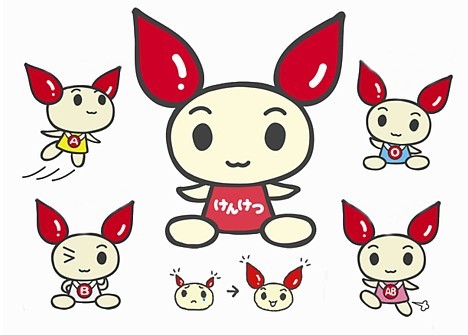
Japan's most well-known blood donation mascot is Kenketsu-chan ("blood donation girl"), a little pixie with big shiny drops of blood for ears. Kenketsu-chan is the official blood donation mascot of the Ministry of Health, Labour and Welfare, which maintains a website devoted to the character.
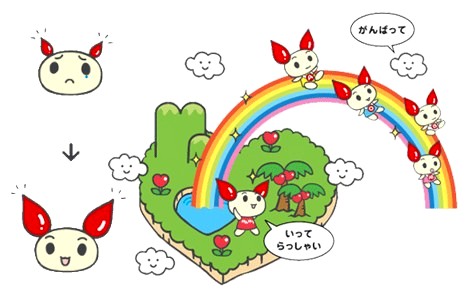
Kenketsu-chan
From the site, we know that Kenketsu-chan's ears shrink when she runs low on blood, but return to their original size when people donate. We also know that she comes from Tasuke Island (Help Island), which features a heart-shaped spring at its center. The spring shoots forth rainbows that carry Kenketsu-chan to wherever people need blood.
As the Japanese government's official blood donation mascot, Kenketsu-chan is often seen working alongside the nation's numerous regional mascots.
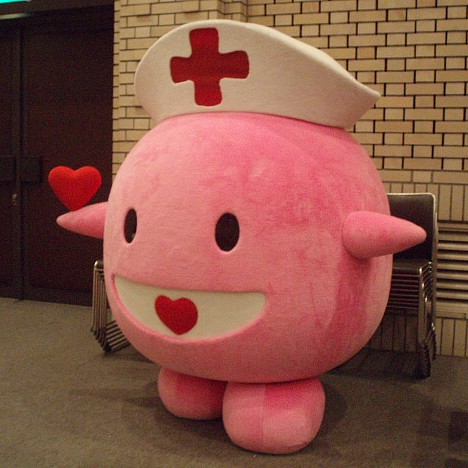
Kokoron-chan
The blood donation mascot of Iwate prefecture is Kokoron-chan, whose name is derived from the word "kokoro" (heart). She was designed to evoke an image of peace, warm-heartedness and blood.
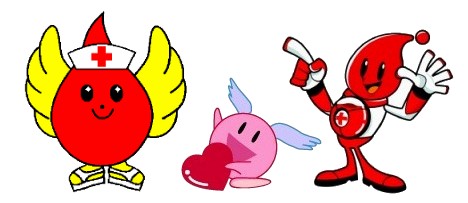
Kibichii-chan // Yūton-kun // Otasuke Ketta-kun
Kibichii-chan, who has been employed by Fukushima prefecture since 1996, takes her name from "kibitaki" (Narcissus Flycatcher, a songbird indigenous to the region) and "chi" (blood). Yūton-kun is from Kyoto, and Otasuke-ketta-kun is from Hokkaidō.
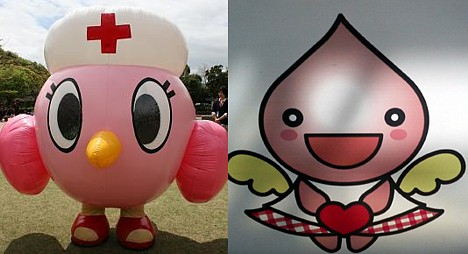
Aipii // Chiipitto
Aipii works the blood drives in Ehime prefecture, and Chiipitto -- whose name is a play on the words "chi" (blood) and "kyūpitto" (Cupid) -- works in Hiroshima prefecture.
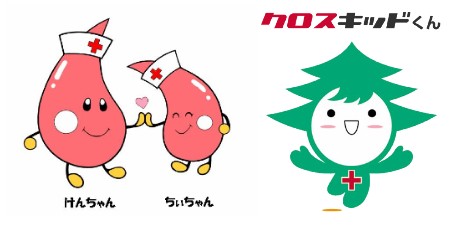
Ken-chan and Chii-chan // CrossKid-kun
Ken-chan and Chii-chan, whose names mean "donation girl" and "blood girl," serve the town of Iwaki in Fukushima prefecture. Standing side by side, they form the hiragana character for "i" (い), which stands for Iwaki and inochi (life). Akita prefecture's CrossKid-kun (Kurosukiddo-kun) is a cedar tree-shaped boy with a red cross on his chest. His name is a play on the words "cross," "kurosugi" (a type of cedar) and "kid."
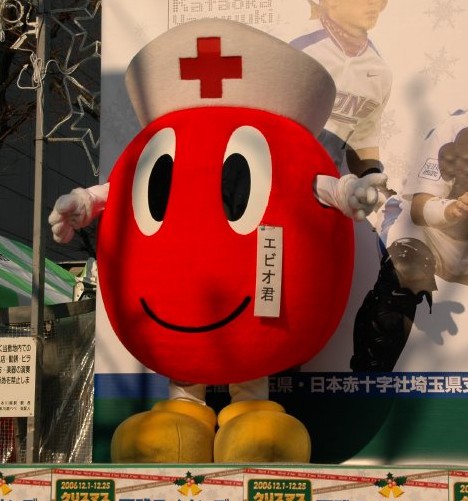
Ebio-kun
Ebio-kun, whose name is pronounced "A-B-O" (like the blood types), is the official blood donation mascot of Saitama prefecture.
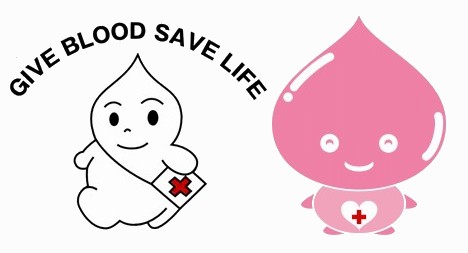
Buratto-kun // Chii-tan
Buratto-kun, whose name means "blood boy," is employed by Aomori prefecture. Chii-tan, or "blood girl," works in Shiga prefecture.

Otasuke Kenta // Dr. Blood
Osaka prefecture uses two mascot characters to attract donors -- Otasuke Kenta and Dr. Blood.
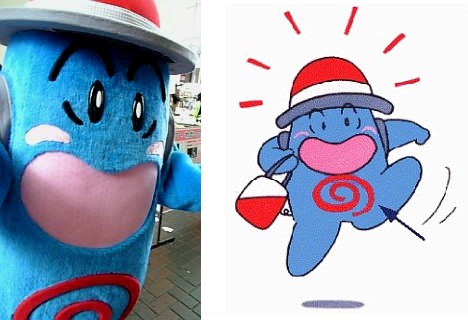
Blood-kun
Finally, Blood-kun is the official blood donation character of Niigata prefecture. According to his website, Blood-kun carries a backpack full of blood. He has short legs but can run fast when hurrying to deliver blood, and his red hat turns into a flashing warning light in an emergency. The spiral on his stomach represents blood circulation. He appreciates it when people offer to fill up his backpack.



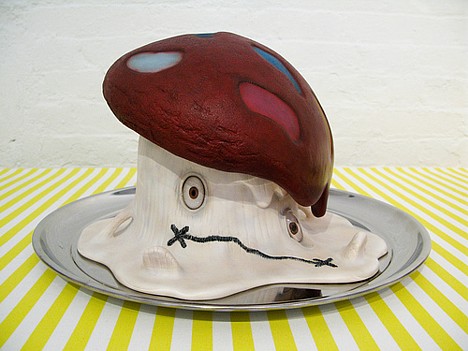
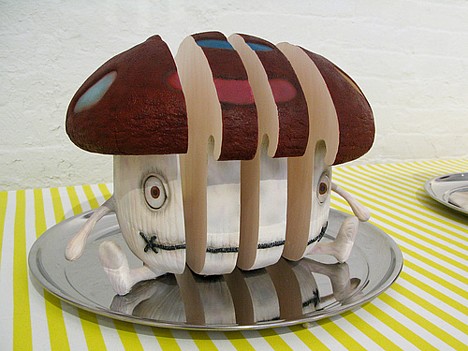
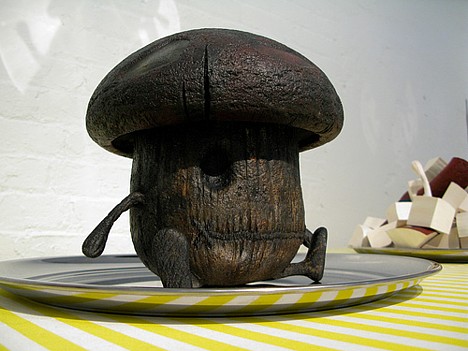
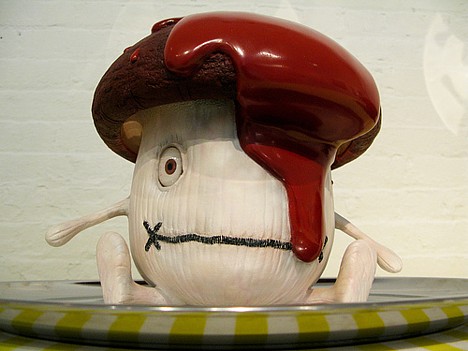
 On May 24, a 17-centimeter tall, 130-gram Panasonic Evolta battery mascot robot scaled a 500-meter cliff at the Grand Canyon in a publicity stunt to showcase the endurance of the Evolta AA alkaline battery, which the Guinness Book of World Records recently recognized as the longest-lasting of its kind. Powered by a pair of Evoltas, the robot hoisted itself up a 530-meter length of rope suspended next to the cliff, reaching the top after a grueling 6 hours and 45 minutes.
On May 24, a 17-centimeter tall, 130-gram Panasonic Evolta battery mascot robot scaled a 500-meter cliff at the Grand Canyon in a publicity stunt to showcase the endurance of the Evolta AA alkaline battery, which the Guinness Book of World Records recently recognized as the longest-lasting of its kind. Powered by a pair of Evoltas, the robot hoisted itself up a 530-meter length of rope suspended next to the cliff, reaching the top after a grueling 6 hours and 45 minutes. 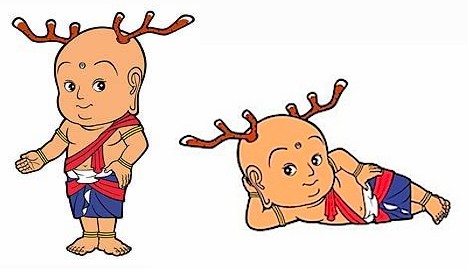
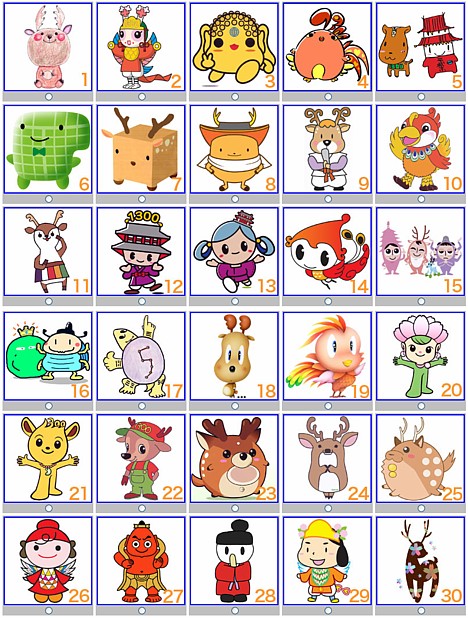

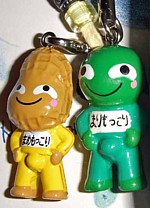 The company came up with the idea for Kirichimpo last year after witnessing the far-reaching success of Marimokkori, a happy, well-endowed green monster mascot from Hokkaido, whose name is a play on the words marimo (a type of giant algae ball found in Lake Akan) and mokkori ("erection"). Marimokkori's popularity extends far beyond Hokkaido's shores, to as far away as Chiba, the home of his younger peanut-headed cousin named Mamemokkori (mame means "bean"), and Tokyo, where mounds of the popular Marimokkori can be found inside UFO Catcher claw vending machines at game centers.
The company came up with the idea for Kirichimpo last year after witnessing the far-reaching success of Marimokkori, a happy, well-endowed green monster mascot from Hokkaido, whose name is a play on the words marimo (a type of giant algae ball found in Lake Akan) and mokkori ("erection"). Marimokkori's popularity extends far beyond Hokkaido's shores, to as far away as Chiba, the home of his younger peanut-headed cousin named Mamemokkori (mame means "bean"), and Tokyo, where mounds of the popular Marimokkori can be found inside UFO Catcher claw vending machines at game centers.